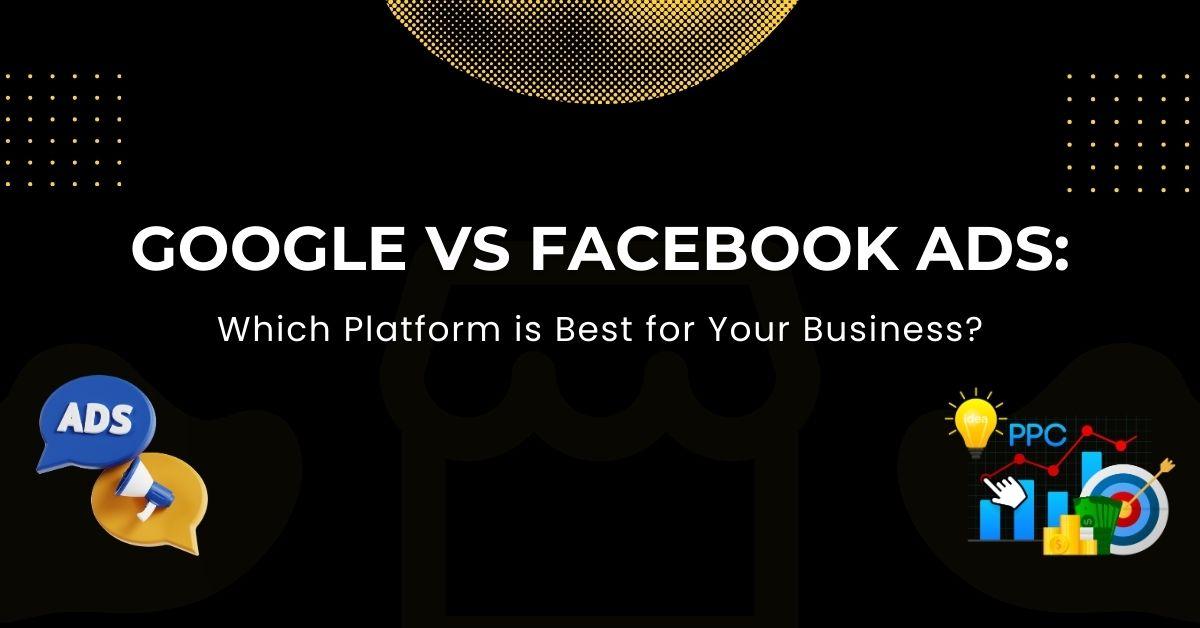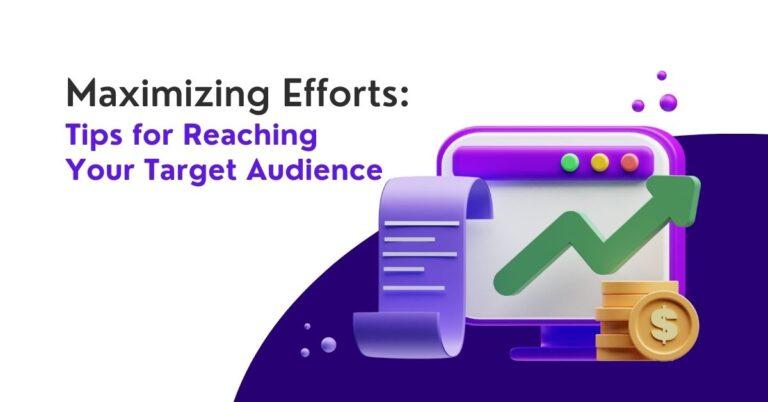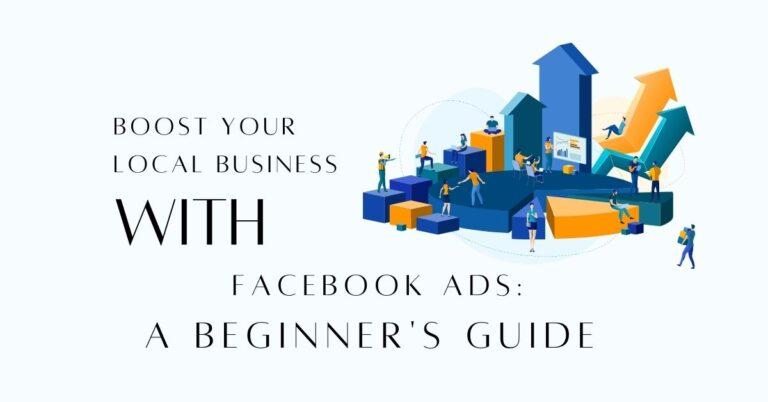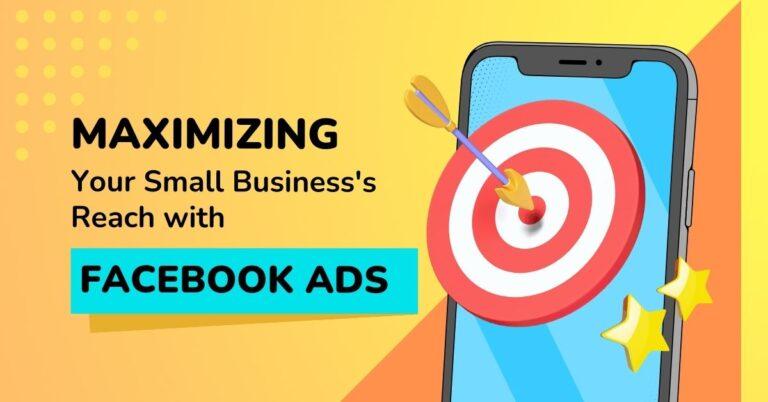In today’s digital age, online advertising has become an essential component of any successful marketing strategy. Two of the most popular platforms for online advertising are Google Ads and Facebook Ads. While both platforms offer businesses the opportunity to reach a wide audience, it is important to understand their differences in order to choose the right platform for your business’s advertising needs.
Google Ads, formerly known as Google AdWords, is an online advertising platform developed by Google. It allows businesses to display ads on Google’s search engine results pages (SERPs) as well as on other websites that are part of the Google Display Network. On the other hand, Facebook Ads is a platform developed by Facebook that enables businesses to create and manage advertisements that appear on users’ news feeds or in other designated ad spaces within the social media platform.
Choosing between these two platforms requires careful consideration of your business goals and target audience. While both platforms offer unique advantages, understanding their differences will help you make an informed decision about which one best suits your business’s needs.
Key Takeaways
- Google Ads offers more precise targeting options than Facebook Ads.
- Facebook Ads has a larger user base than Google Ads.
- Google Ads is more cost-effective for businesses with high conversion rates.
- Facebook Ads offers more user-friendly ad management tools than Google Ads.
- Both Google Ads and Facebook Ads have robust analytics and reporting features.
Targeting Capabilities: Which Platform Offers More Precise Targeting Options?
One crucial aspect of online advertising is targeting capabilities – how effectively you can reach your desired audience with your ads. Both Google Ads and Facebook Ads offer powerful targeting options, but they differ in terms of approach.
Google Ads primarily relies on keyword targeting based on user search queries. This means that when users search for specific keywords related to your product or service, your ads have a higher chance of appearing in relevant search results. This type of targeting can be particularly effective if you have a product or service with high intent keywords where users are actively searching for solutions.
On the other hand, Facebook Ads offers more precise demographic and interest-based targeting options due to its vast amount of user data collected from profiles and interactions within its platform. With Facebook’s advanced targeting capabilities, you can narrow down your audience based on factors such as age, gender, location, interests, and even behaviors. This type of targeting is especially useful if you have a product or service that appeals to a specific demographic or interest group.
For example, if you are a local bakery looking to target individuals in your area who have shown an interest in baking and cooking, Facebook Ads would allow you to reach this specific audience more effectively. Conversely, if you are an online retailer selling specialized computer hardware components and want to target users actively searching for those products, Google Ads would be the better choice.
Ad Formats: Comparing the Types of Ads Available on Google and Facebook
Another important consideration when choosing between Google Ads and Facebook Ads is the variety of ad formats available on each platform. The ad formats offered by each platform have their own unique advantages and can be used effectively depending on your business goals.
Google Ads offers several ad formats including text ads, display ads (banners), video ads (YouTube), shopping ads (product listings with images), app promotion ads (for mobile apps), and more. Text ads are displayed alongside search results when users search for relevant keywords while display ads appear on websites within the Google Display Network. Video ads can be shown before or during YouTube videos while shopping ads showcase product listings with images directly within search results.
Facebook Ads also provides various ad formats such as image ads (single image or carousel format), video ads (in-feed videos or stories format), collection ads (showcasing multiple products in one ad unit), lead generation forms for capturing user information directly within the platform itself, among others.
The choice of which ad format to use depends largely on your business objectives and target audience preferences. For instance, if you want to showcase visually appealing products with high-quality images or videos along with detailed descriptions directly within users’ news feeds or stories feed where they spend most of their time browsing content from friends and family, Facebook Ads’ image or video ad formats would be ideal. On the other hand, if you want to capture users’ attention when they are actively searching for products or services related to your business, Google Ads’ text ads or shopping ads may be more effective.
Cost: Which Platform is More Cost-Effective for Your Business?
| Platform | Cost | Features | Scalability |
|---|---|---|---|
| Platform A | Low | Basic | Limited |
| Platform B | Medium | Advanced | High |
| Platform C | High | Premium | Unlimited |
Cost is a significant factor to consider when deciding between Google Ads and Facebook Ads. Both platforms operate on different cost structures and offer various pricing models that can impact your advertising budget.
Google Ads operates on a pay-per-click (PPC) model, meaning you only pay when someone clicks on your ad. The cost per click (CPC) varies depending on factors such as keyword competitiveness and quality score. The quality score is determined by the relevance of your ad copy, landing page experience, and expected click-through rate (CTR). This means that if you have highly relevant ads with good quality scores, you can potentially achieve lower CPCs.
Facebook Ads also operates on a PPC model but offers additional pricing options such as cost per thousand impressions (CPM), where you pay based on the number of times your ad is shown to users regardless of whether they click on it or not. The CPM pricing model can be advantageous if brand awareness is one of your primary goals as it allows you to reach a larger audience without necessarily driving immediate clicks.
The cost-effectiveness of each platform depends largely on factors such as industry competition, target audience demographics, campaign objectives, and overall advertising strategy. It’s important to monitor performance metrics closely and optimize campaigns regularly in order to maximize return-on-investment (ROI) regardless of which platform you choose.
Audience Reach: Which Platform Has a Larger User Base?
When it comes to audience reach potential, both Google and Facebook boast massive user bases that can significantly impact the success of your advertising efforts.
Google has an extensive reach through its search engine, which is the most widely used search engine globally. According to StatCounter, as of September 2021, Google holds a dominant market share of over 92% in the global search engine market. This means that by advertising on Google Ads, you have the potential to reach billions of users who are actively searching for information or solutions related to your business.
Facebook, on the other hand, has an enormous user base with over 2.8 billion monthly active users as of September 2021. This makes it the largest social media platform in terms of user count and provides businesses with a vast audience pool to target their ads. Facebook’s extensive user data also allows for precise targeting options based on demographics and interests.
The choice between Google Ads and Facebook Ads in terms of audience reach depends on your business objectives and target audience characteristics. If you want to capture users’ attention when they are actively searching for products or services related to your business, Google Ads’ massive search engine reach can be highly advantageous. However, if you want to build brand awareness or engage with a specific demographic or interest group through targeted advertising campaigns, Facebook Ads’ large user base and advanced targeting capabilities may be more suitable.
Conversion Rates: Which Platform is More Effective at Driving Conversions?
Driving conversions – whether it’s sales, leads, sign-ups or any other desired action – is ultimately one of the primary goals of online advertising campaigns. Comparing conversion rates between Google Ads and Facebook Ads can help determine which platform is more effective at driving desired actions from your target audience.
Google Ads has traditionally been known for its strong performance in driving high-intent conversions due to its keyword-based targeting approach. When users actively search for specific keywords related to your product or service and click on your ad within relevant search results pages (SERPs), they are often further along in their purchase journey compared to those who encounter ads passively while browsing social media platforms. This higher intent can lead to higher conversion rates for businesses advertising on Google Ads.
Facebook Ads, on the other hand, may have a lower intent audience as users are typically not actively searching for products or services when they encounter ads within their news feeds or stories. However, Facebook’s advanced targeting capabilities allow businesses to reach users who match specific demographics and interests that align with their offerings. By effectively targeting the right audience with compelling ad creatives and engaging copy, businesses can still achieve high conversion rates on Facebook Ads.
The effectiveness of each platform at driving conversions depends on various factors such as industry vertical, target audience characteristics, ad relevance, landing page experience, and overall campaign strategy. It is crucial to continuously monitor performance metrics such as click-through rates (CTR), conversion rates (CVR), cost per acquisition (CPA), and return-on-ad-spend (ROAS) in order to optimize campaigns for maximum conversions regardless of which platform you choose.
Ad Placement: Comparing the Placement Options Available on Google and Facebook
Ad placement plays a significant role in the effectiveness of your advertising efforts as it determines where your ads will be displayed within each platform’s ecosystem.
Google Ads offers various ad placement options depending on the chosen campaign type. For search campaigns, ads are primarily displayed alongside organic search results when users search for relevant keywords related to your business offerings. Display campaigns allow you to place ads across websites that are part of the Google Display Network – a vast network of partner websites where advertisers can display image or video ads in banner formats.
Facebook Ads provides multiple ad placement options within its social media platform ecosystem including news feed placements (both desktop and mobile), right column placements (desktop only), instant articles placements (within articles viewed through Facebook’s Instant Articles feature), marketplace placements (within Facebook’s online marketplace feature), stories placements (full-screen vertical format available both in-feed and standalone) among others.
The choice between Google Ads and Facebook Ads in terms of ad placement depends on your business objectives, target audience preferences, and the nature of your offerings. If you want to capture users’ attention when they are actively searching for products or services related to your business, Google Ads’ search ad placements can be highly effective. However, if you want to engage with users within their social media feeds or take advantage of visually immersive formats like stories, Facebook Ads’ various placement options may be more suitable.
Ad Management: Which Platform Offers More User-Friendly Ad Management Tools?
Efficient ad management is crucial for successful advertising campaigns as it allows businesses to effectively create, monitor, optimize and measure the performance of their ads. Comparing the ad management tools available on Google Ads and Facebook Ads can help determine which platform offers a more user-friendly experience.
Google Ads provides a comprehensive suite of tools that allow advertisers to manage their campaigns effectively. The platform offers features such as campaign creation wizards that guide advertisers through the process step-by-step, keyword research tools for finding relevant keywords to target in search campaigns, automated bidding strategies that optimize bids based on specific goals (e.g., maximize clicks or conversions), detailed reporting dashboards with customizable metrics views and data visualization options among others.
Facebook Ads also offers a range of user-friendly ad management tools designed to simplify campaign creation and optimization processes. The platform provides an intuitive campaign creation interface where advertisers can easily set up targeting parameters, select ad formats and placements, define budgets and schedules among other settings. Additionally, Facebook’s dynamic creative feature allows businesses to test multiple variations of creatives (images/videos/headlines/copy) within a single campaign automatically optimizing towards top-performing combinations.
The choice between Google Ads and Facebook Ads in terms of user-friendly ad management tools depends on factors such as familiarity with each platform’s interface, complexity level required by your advertising strategy (e.g., advanced automation vs manual control), available resources (e.g., in-house marketing team vs external agency), and overall campaign objectives. It is recommended to explore the features and capabilities of each platform’s ad management tools before making a decision.
Analytics and Reporting: Comparing the Analytics and Reporting Features of Google and Facebook Ads
Analytics and reporting play a crucial role in optimizing advertising efforts as they provide valuable insights into campaign performance, audience behavior, conversion tracking, and return-on-investment (ROI). Comparing the analytics and reporting features available on Google Ads and Facebook Ads can help determine which platform offers more robust capabilities for data-driven decision-making.
Google Ads provides advertisers with comprehensive analytics tools through its integration with Google Analytics – a powerful web analytics platform. This integration allows businesses to track website traffic, user behavior, conversion funnels, e-commerce transactions among other metrics directly within their Google Ads account. Additionally, Google Ads offers detailed reporting dashboards that provide insights into key performance indicators (KPIs) such as impressions, clicks, click-through rates (CTR), conversions by source/medium/campaign/keyword/location/device among others.
Facebook Ads also provides advertisers with robust analytics tools within its platform that allow businesses to measure campaign performance effectively. The platform offers detailed reporting dashboards that provide insights into KPIs such as reach/impressions/frequency by audience segment/ad placement/ad format/campaign objective among others. Additionally, Facebook’s pixel tracking feature enables businesses to track conversions on their websites or mobile apps attributed to specific ads or campaigns.
The choice between Google Ads and Facebook Ads in terms of analytics and reporting depends on factors such as your familiarity with each platform’s interface, integration requirements with other marketing tools (e.g., CRM systems), depth of data analysis required by your advertising strategy (e.g., advanced segmentation vs high-level overview), available resources for data interpretation (e.g., dedicated analysts vs self-service approach). It is recommended to evaluate the capabilities of each platform’s analytics and reporting features based on your specific needs before making a decision.
Case Studies: Real-World Examples of Businesses That Have Had Success with Google and Facebook Ads
To further illustrate the potential of both Google Ads and Facebook Ads, let’s explore some real-world examples of businesses that have achieved success using these platforms.
Case Study 1: Company A is an e-commerce retailer specializing in outdoor gear. They decided to run a campaign on Google Ads targeting keywords related to hiking boots, camping equipment, and outdoor apparel. By leveraging the high intent nature of search ads, they were able to capture users actively searching for these products. The campaign resulted in a significant increase in website traffic, click-through rates (CTR), and ultimately conversions as users found their products directly through relevant search queries.
Case Study 2: Company B is a fashion brand targeting young adults interested in sustainable fashion. They ran a campaign on Facebook Ads utilizing detailed interest-based targeting options such as eco-friendly fashion brands, sustainable lifestyle influencers, and environmental organizations. By showcasing visually appealing image ads within users’ news feeds who matched these interests, they were able to generate high engagement rates (likes/comments/shares) resulting in increased brand awareness among their target audience.
These case studies highlight how different businesses can leverage the strengths of each platform to achieve their advertising goals effectively. It is important to note that success stories may vary depending on various factors such as industry verticals, target audience characteristics/preferences/behaviors/geographic locations/buying cycles/competition levels among others.
Conclusion: Choosing the right career path is a crucial decision that can greatly impact one’s future happiness and success. It is important to consider one’s interests, skills, values, and goals when making this decision. By taking the time to explore different options, seek guidance from mentors, and reflect on personal strengths and passions, individuals can make an informed choice that aligns with their unique talents and aspirations. Ultimately, finding a career that brings fulfillment and satisfaction is key to leading a fulfilling and purposeful life.
FAQs
What are Google Ads?
Google Ads is an online advertising platform developed by Google, where advertisers pay to display brief advertisements, service offerings, product listings, or videos to web users.
What are Facebook Ads?
Facebook Ads is an online advertising platform developed by Facebook, where advertisers pay to display advertisements, service offerings, product listings, or videos to Facebook users.
What is the difference between Google Ads and Facebook Ads?
Google Ads is a search-based advertising platform, while Facebook Ads is a social media-based advertising platform. Google Ads targets users based on their search queries, while Facebook Ads targets users based on their interests, demographics, and behaviors.
Which platform is better for my business?
The answer to this question depends on your business goals and target audience. If you are looking to target users who are actively searching for your products or services, then Google Ads may be a better option. If you are looking to target users based on their interests, demographics, and behaviors, then Facebook Ads may be a better option.
What are the costs associated with Google Ads and Facebook Ads?
The costs associated with Google Ads and Facebook Ads vary depending on a number of factors, including your target audience, ad placement, and bidding strategy. Both platforms operate on a pay-per-click (PPC) model, where advertisers only pay when a user clicks on their ad.
How do I measure the success of my Google Ads or Facebook Ads campaign?
Both Google Ads and Facebook Ads offer a range of metrics to measure the success of your campaign, including click-through rate (CTR), conversion rate, and cost-per-click (CPC). It is important to set clear goals and track your metrics regularly to ensure the success of your campaign.
Thank you for reading! Share your experiences and questions in the comments below!




